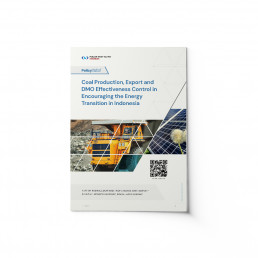Coal is one of the sources of energy and fossil fuels with a large proportion in the national energy mix, reaching 37% (ESDM, 2021). Although the Government has set a target to reduce the portion of coal in the energy mix at 30% in 2025, and 25% in 2050 in the National Energy General Plan (RUEN), the figure is still increasing from year to year. Sourced from the same data, Figure 1 confirms that the total other fossil energy still dominates the national energy mix up to 90%. The gap between the realization and the target set by the government certainly raises a question mark on the seriousness of the Government and policy makers in implementing a strategy for reducing greenhouse gas emissions through an energy transition strategy: from fossil-based to renewable energy sources.
This policy paper reviews the implementation of the government’s commitment to the energy transition strategy, particularly in terms of managing Indonesian coal mines (upstream sector), which we view as contributing to downstream problems, namely the dominance of coal in the national energy mix. The discussion begins with the identification of Indonesia’s coal management policies, both from the energy management and development framework. Moving on from here, the discussion focuses on the implementation of the government’s commitments in three aspects, namely controlling production and trade, as well as providing an analysis of the effectiveness of coal fulfillment for domestic needs (domestic market obligation, DMO), and then ends with the formulation of policy recommendations.
